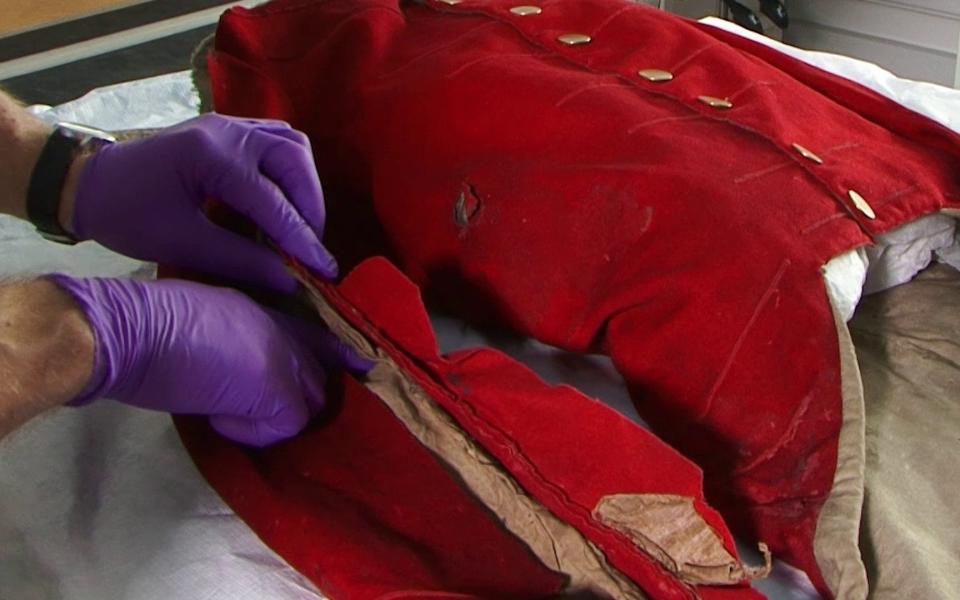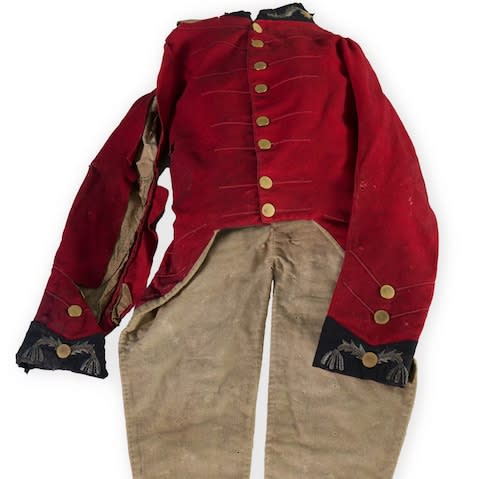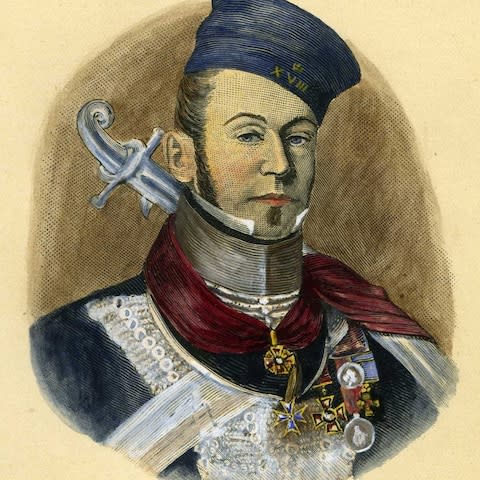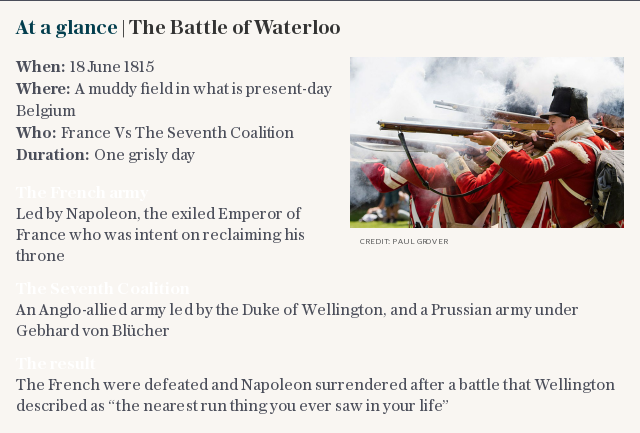Waterloo red jacket kept in family for 200 years proves ancestor was British hero

Tales of family heroics inevitably become exaggerated and embellished over time.
But the descendants of Sir Thomas Noel Harris, a British Brigade-Major in the Battle of Waterloo, can finally rest assured that their ancestor really did play a pivotal and death-defying role in the decisive conflict.
Family legend and diaries suggested Sir Thomas had been shot, and had his arm amputated on the battlefield.
So when a jacket purporting to belong to the officer came up for auction, his family bought it and asked forensic experts at Cranfield University to find out whether it was the genuine article and if it backed up his story.
Not only were scientists able to say with certainty that the uniform was present at the battle in 1815, but also to find out more details of how Sir Thomas was injured.
Professor Andrew Shortland, Director of Canfield Forensic Institute (CFI), said: “CFI is regularly involved in the analysis of historical objects for museums and other clients – especially objects made of glass, metals and ceramic.
“This was a very unusual item for us, but particularly interesting, being involved as it was in a key moment in national and international history.”

To find out whether the jacket really did belong to Sir Thomas the team first took DNA samples from the fibres to compare with his relatives. Next, they extracted soil samples to compare with samples from the Waterloo battlefield.
And finally the used analysis of the bullet damage to the jacket to see if it was consistent with the reported injuries sustained by the British Army Officer in the battle.
Although DNA from blood stains on the jacket had degraded to a level beyond use for analysis, soil samples showed a very strong similarity in mineral content to the British section of the battlefield.
An account from the time identified Sir Thomas as lying overnight in this section of the battlefield after he had been wounded and fell from his horse.

Although family history suggests that he was shot twice, examination of three holes on the right sleeve and right side of the jacket showed that they line up with each other suggesting he was only shot once and the musket ball passed through both his arm and side.
There is no exit hole on the jacket and the forensic team believe that the ball shattering Harris’ arm saved his life – if it had penetrated his torso directly it may have proved fatal.
Harris was found on the battlefield the following morning and taken to the nearest dressing station at Hougoumont farm where his right arm was amputated immediately.
The material on the right sleeve of the jacket has been cut from cuff to shoulder, and forensic examination of the cut’s edges suggests that it was made by an instrument sharper than scissors, such as a surgical knife.
It is probable that the surgeon who undertook the operation used the same knife to cut the sleeve as to amputate the arm, the team concluded.

A diary kept by Sir Thomas, together with other military history and research, was also used to piece together the events and confirm the findings.
Prof Shortland added: “We were able to safely confirm the authenticity of the jacket and place it on the Waterloo battlefield.
“In so doing, we also gained further insight into the grievous wounds suffered by Harris during the battle, which themselves reflect the experience of those who fought, and died, on that day.”
Sir Thomas was born in Whitwell, Rutland, in 1785.
He was one of many officers attending the Duchess of Richmond's ball in Brussels on June 15th 1815 with the Duke of Wellington when guests received orders to join units after learning Napoleon was advancing.
Consequently he, and the others, left immediately in their swallow-tailed court dress coats, which were worn at the battles of Quatre Bras and Waterloo.
He retired from the army in September 1834 and became Chief Magistrate in Gibraltar.

 Yahoo News
Yahoo News 